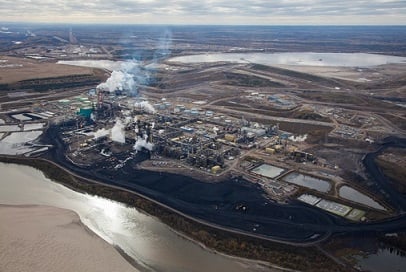Most recognized for its oilsands, the province has several resources that can lure energy investors

Given how Alberta has been brought low by its ailing oilsands industry, one would think that the oilsands are its one and only selling proposition for energy investors. However, the province actually has several arrows in its energy resource quiver.
“BC has mostly natural gas. Saskatchewan has mostly oil. Sandwiched in between, Alberta has a smorgasbord of everything,” said ARC Financial Chief Energy Economist and Managing Director Peter Tertzakian in an article published by the Financial Post.
He noted that the Canadian energy industry is starting to lean away from the oilsands after a 10-year uptrend. Only a third of the Canadian energy industry’s $42 billion in expected capital spending in 2017 will go to Fort McMurray. New investments are favoring natural gas, liquids, and light oils in the Western Canadian Sedimentary Basin (WCSB).
The epicenter for new oil and gas activity is in places like Fort St. John in BC, Grande Prairie in Alberta, and Estevan in Saskatchewan. According to Tertzakian, Alberta has experienced a 200% uptick in drilling activity, the lion’s share of new developments. “[L]ike a lion the province’s resources have scale. Even after excluding the oilsands, over 44% of the WCSB’s potential oil and gas reserves lay within its political borders,” he said.
With a broad range of source rocks to tap, Alberta also benefits from the widest diversity of hydrocarbon types among the provinces that cover the WCSB. Therefore, it has the flexibility to choose a particular source based on commodity prices, fiscal terms, regulations, and a wide variety of other factors.
The other two provinces still bring something to the table, however. Saskatchewan has easily accessible light-oil reserves, and has the lightest royalty burden among the three jurisdictions. While it can’t absorb as much investment as Alberta, the number of rigs working in the province this first quarter has risen compared to the same period last year. As for BC, the price of its natural gas tends to be discounted locally due to limited takeaway capacity in its gas pipelines, but certain areas around Fort St. John have garnered attention from high-productivity light oils.
“Yes, Canada’s oil and gas industry is rebounding. But it’s not just a business-as-usual rebound,” Tertzakian said. “This one rebound has many positive aspects for all three provinces.”
Related stories:
Shell shuns oil, eyes shale in Alberta
Why optimism is back in Canadian energy stocks
“BC has mostly natural gas. Saskatchewan has mostly oil. Sandwiched in between, Alberta has a smorgasbord of everything,” said ARC Financial Chief Energy Economist and Managing Director Peter Tertzakian in an article published by the Financial Post.
He noted that the Canadian energy industry is starting to lean away from the oilsands after a 10-year uptrend. Only a third of the Canadian energy industry’s $42 billion in expected capital spending in 2017 will go to Fort McMurray. New investments are favoring natural gas, liquids, and light oils in the Western Canadian Sedimentary Basin (WCSB).
The epicenter for new oil and gas activity is in places like Fort St. John in BC, Grande Prairie in Alberta, and Estevan in Saskatchewan. According to Tertzakian, Alberta has experienced a 200% uptick in drilling activity, the lion’s share of new developments. “[L]ike a lion the province’s resources have scale. Even after excluding the oilsands, over 44% of the WCSB’s potential oil and gas reserves lay within its political borders,” he said.
With a broad range of source rocks to tap, Alberta also benefits from the widest diversity of hydrocarbon types among the provinces that cover the WCSB. Therefore, it has the flexibility to choose a particular source based on commodity prices, fiscal terms, regulations, and a wide variety of other factors.
The other two provinces still bring something to the table, however. Saskatchewan has easily accessible light-oil reserves, and has the lightest royalty burden among the three jurisdictions. While it can’t absorb as much investment as Alberta, the number of rigs working in the province this first quarter has risen compared to the same period last year. As for BC, the price of its natural gas tends to be discounted locally due to limited takeaway capacity in its gas pipelines, but certain areas around Fort St. John have garnered attention from high-productivity light oils.
“Yes, Canada’s oil and gas industry is rebounding. But it’s not just a business-as-usual rebound,” Tertzakian said. “This one rebound has many positive aspects for all three provinces.”
Related stories:
Shell shuns oil, eyes shale in Alberta
Why optimism is back in Canadian energy stocks



